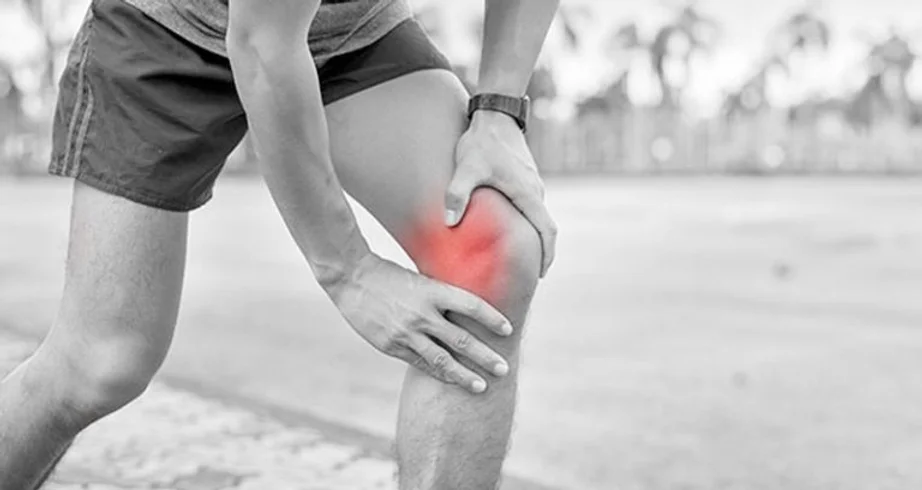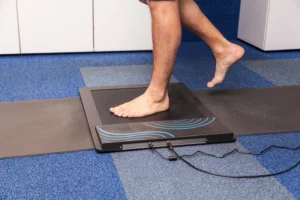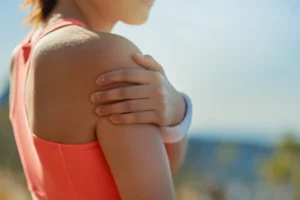Introduction:
Here we will explore the causes of knee pain, risk factors for knee injuries, anatomy and physiology of the knee, common symptoms and how we at All Out Physiotherapy in Paisley can assist in full recovery through tailored rehabilitation strategies. We will also discuss beneficial exercises to promote healing and restore optimal knee function.
Prevalence:
Knee pain is a common complaint that affects a significant number of individuals, ranging from athletes to sedentary individuals. It can occur at any age but becomes more prevalent with advancing age and participation in high-impact activities.
Consequences of Neglected Knee Pain:
Neglecting knee pain can lead to chronic discomfort, functional limitations, reduced quality of life, and potential complications such as joint degeneration and muscle weakness. Timely intervention is crucial to prevent further damage and promote optimal recovery.
Risk Factors:
There are several factors increase the risk of developing knee pain:
a. Overuse and Repetitive Movements: Engaging in activities that involve repetitive knee movements or excessive stress on the knee joint, such as running, jumping, or squatting, can contribute to knee pain.
b. Previous Injuries: Individuals with a history of knee injuries, such as ligament tears or meniscus injuries, may be more prone to experiencing knee pain.
c. Excess Weight: Being overweight or obese puts additional strain on the knee joint, increasing the risk of pain and injury.
d. Muscle Imbalances: Weakness or imbalances in the muscles surrounding the knee, such as the quadriceps and hamstrings, can affect joint stability and lead to pain.
e. Age and Degenerative Changes: Older individuals are more susceptible to knee pain due to age-related changes in joint structures, such as arthritis or degenerative joint disease.
Anatomy and Physiology of the Knee:
The knee joint is a complex structure that involves the interaction of bones, ligaments, tendons, and muscles. It consists of the femur (thigh bone), tibia (shin bone), and patella (kneecap). Ligaments provide stability, while tendons connect muscles to bones. The knee joint allows for flexion, extension, and slight rotation of the lower leg.
Common Symptoms:
Knee pain may present with the following symptoms:
a. Pain, tenderness, or swelling around the knee joint.
b. Difficulty bearing weight or walking.
c. Stiffness and limited range of motion.
d. Instability or feeling the knee “giving way.”
e. Clicking or popping sensations during movement.
f. Redness or warmth around the knee.

Common conditions which affect the knee are listed as below:
At the anterior (front) of the knee pain can be related to the patella (kneecap), which can be patella tracking disorder, patellofemoral joint pain, chondromalacia patella, or osteoarthritis of the patella. Plica syndrome can vary in terms of its location but most commonly affects the anterior medial aspect of the knee so would be felt just on the inside of the patella.
Below the patella (kneecap): you are more likely to experience pain from osteochondritis dissecans, and Osgood-Schlatters disease.
Inferior (below the kneecap) pole of the patella: the lower tip of the knee cap is where the pain is felt if a child has Sinding Larsen Johanson Syndrome. Patellar tendinopathy can be felt either at the inferior pole or at the tibial tuberosity.
Superior pole of the patella: the upper tip of the knee cap is where quadriceps tendinopathy pain will be felt.
Central posterior knee (At the back and in the middle): at the centre of the back of the knee is where the pain from a Baker’s Cyst, Popliteus Tendinopathy, Meniscus Injury, Osteoarthritis or anterior cruciate ligament and posterior cruciate ligament injuries will be felt.
Below the knee joint line (Crease in the knee at the back): calf muscle pain is mostly felt below the knee in the main part of the calf muscle, but tendon injury can be felt on either side of the knee at the back.
Above the knee joint line (Crease in the knee at the back): hamstring tendinopathy and hamstring injuries will be felt higher up above the knee.

Along the medial joint line: along the inner joint line is the pain location for a medial meniscus injury or a medial collateral ligament injury.
Back of the medial knee: tendinopathy to a medial hamstring, felt at the back on the inside of the knee.
Front of the medial knee: further forwards on the inside but near the front of the knee is where the pain and inflammation of a Pes Anserine Bursitis will be felt. Patellofemoral pain can also be described as being on the inside of the knee but will be located along the patella border.
Above the knee joint line: pain on the outside of the knee can be related to iliotibial band pain syndrome, and this is felt above the joint line into the outer side of the thigh, but can sometimes continue along the outside of the knee to just below the joint line.
At the knee joint line: injury to the lateral meniscus or lateral collateral ligament will be felt along the joint line of the knee.
Below the knee joint line: a calf injury can be felt on the outside of the knee, but located to the back and below the joint line.
Quadriceps tendinopathy can sometimes be described as being on the outside of the knee but is usually more focused at the front of the knee at the superior pole of the patella.
Physiotherapy Management and Rehabilitation Methods:
Physiotherapy plays a crucial role in the effective management and rehabilitation of knee pain. So if your struggling with knee pain here is some advice which could help with your knee pain
a. Comprehensive Assessment: We at All Out Physiotherapy near me in with our clinic based in Paisley are experts at assessing, diagnosing and treating knee pain. A thorough evaluation of the knee, including range of motion, strength, stability, and functional movements, to identify the underlying cause of the pain.
b. Pain and Inflammation Management: Modalities like ice or heat therapy, acupuncture and massage.
c. Manual Therapy: Techniques such as joint mobilization, soft tissue massage, and myofascial release to improve joint mobility and reduce muscle tension.
d. Strengthening Exercises: Targeted exercises to strengthen the muscles around the knee, including the quadriceps, hamstrings, and glutes, to improve joint stability and support.
e. Range of Motion Exercises: Gentle stretches and mobility exercises to improve flexibility and restore full range of motion in the knee joint.
f. Functional Rehabilitation: Gradual reintroduction of functional activities and sport-specific movements to ensure a safe return to daily activities or sports.
g. Balance and Proprioception Training: Exercises to improve balance, proprioception (awareness of joint position), and coordination to enhance knee stability.
h. Education and Self-Management: Guidance on proper body mechanics, injury prevention strategies, and self-management techniques to reduce the risk of future knee pain episodes.
All of this is covered by us at All Out Physiotherapy. We aim to find the root cause of your painful knee. By finding the root cause of knee pain we are then able to reduce pain, improve function and prevent further injury. We use an app to help us track your exercises and your progress as well as regular check ins to help improve how you are doing. Our aim is to allow you to take control and All Out Physiotherapy is the place to help make that happen.


